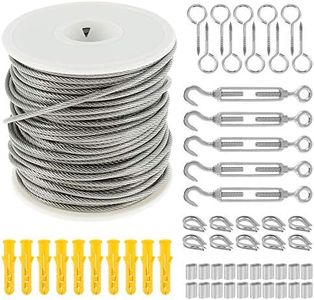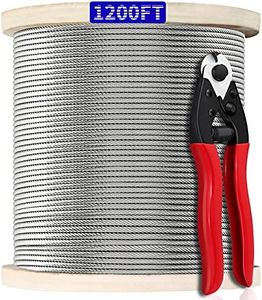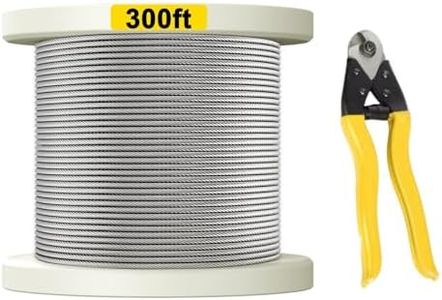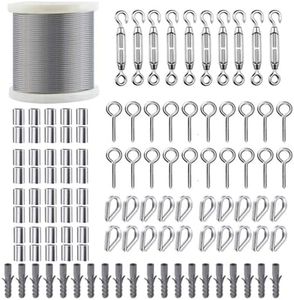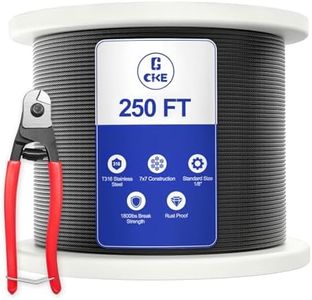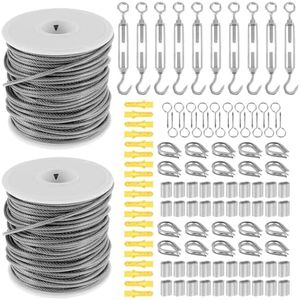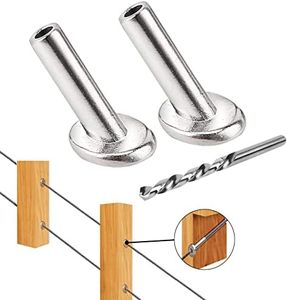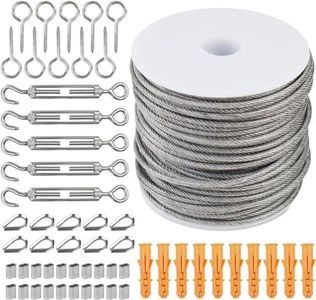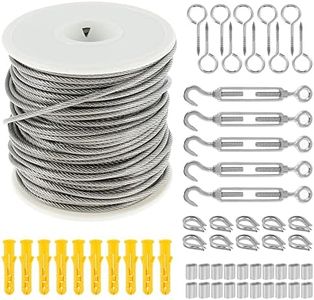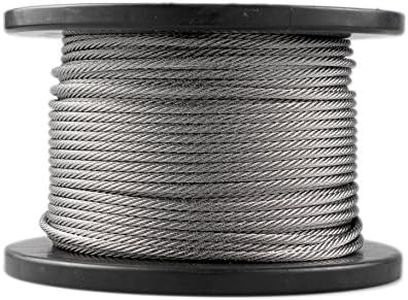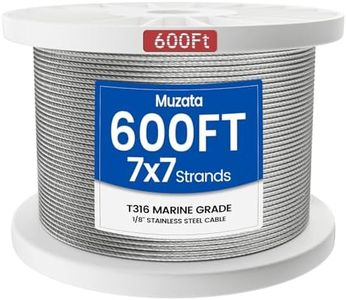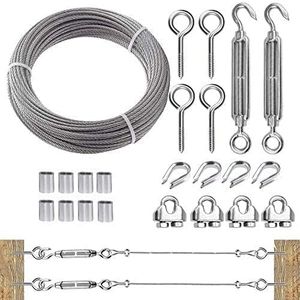We Use CookiesWe use cookies to enhance the security, performance,
functionality and for analytical and promotional activities. By continuing to browse this site you
are agreeing to our privacy policy
10 Best Wire Cable For Railings
From leading brands and best sellers available on the web.By clicking on a link to a third party's website, log data is shared with that third party.
Buying Guide for the Best Wire Cable For Railings
Choosing wire cable for railings means balancing safety, appearance, and durability. The right cable ensures your railing is secure enough to prevent accidents, looks good in your space, and stands up to the weather if you're using it outside. Start with a clear idea of where your railing will be (indoors or outdoors), how much strength is needed, and what type of look fits your style. Carefully considering key specifications will help you end up with a railing that is safe and lasting.MaterialThe material of the cable affects both its strength and resistance to corrosion. Stainless steel is the most common material for cable railings because it resists rust and corrosion very well, making it suitable for both indoor and outdoor use. Galvanized steel cables are also available and cost less, but they aren't as resistant to corrosion. When choosing the material, consider whether your railing will be exposed to weather or moisture—outdoor or poolside railings need stainless steel, while well-protected indoor areas may allow for alternatives.
Cable DiameterCable diameter means how thick the wire is, usually measured in inches or millimeters. Thicker cables (1/4" or more) are stronger and have a more noticeable look, which might be important for safety or style. Thinner cables (like 1/8" or 3/16") offer a sleeker and less visible design, but may require more posts or supports to keep from sagging. If you need a barrier that is sturdy and very secure, go with a thicker cable. If appearance and open views are a priority, a thinner cable might be the right choice.
Stranding/Wire ConstructionStranding refers to how many smaller wires are twisted together to make the cable. Typical patterns include 1x19 or 7x7. A 1x19 cable has 19 strands twisted together in one bundle, making it smooth, stiff, and best for straight runs. A 7x7 cable is made of seven bundles, each with seven wires, making it more flexible. Stiff cables keep your lines straight and minimize sag, while flexible cables are better for bends or curves. The choice depends on whether your railing runs in straight lines or needs to go around corners.
Tensile StrengthTensile strength is how much pulling force the cable can handle before it breaks. This is important for safety, especially if the railing has to meet building codes. Cable that isn't strong enough could snap under pressure. High tensile strength is necessary for most residential and commercial railings. Check what strength is required for your area (like for balconies or stairways), and pick a cable that can easily handle that load.
Finish/CoatingThe finish or coating of the cable affects both its appearance and its protection against rust or wear. Cables can be bare stainless, have a polished look, or be coated with vinyl. A polished or brushed finish can provide a modern look, while a vinyl coating adds an extra layer of protection, making it ideal for outdoor or seaside use. The right finish depends on your design taste and exposure to the elements—choose a more protective coating for harsh environments and a clean, simple finish for indoors.
